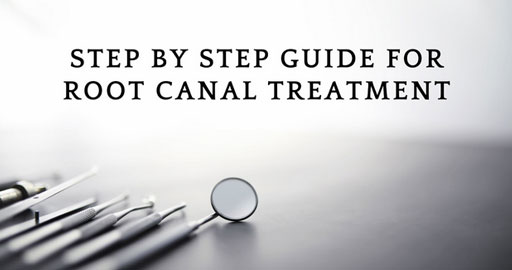
Root Canal Treatment Steps
Table of Contents
RCT aka as root canal treatment procedure—a dentist’s way of saving a tooth that has become too damaged or infected to be treated normally without extraction. This involves removing nerves inside the tooth. This is followed by cleaning up and disinfecting the inner chambers. Sealing of the tooth comes afterward to prevent re-infection. Listed below are the steps of a Root Canal Treatment that definitely will make things easy to understand if you are looking forward to getting an RCT done.
Step 1: Diagnosis
This whole process initiates with the primary diagnosis, where the need for a root canal is being treated. The dentist explores the recall of patient complaints, review of symptoms, X-rays on that respective tooth, and some tests whose conclusion is arrived that the pulp in your tooth is either infected or injured. If necessary, he proceeds to the second step—that is, availing a root canal.
Step 2: Local Anaesthesia
But before that, a local anesthesia will be given first by the dentist. It numbs the tooth and the area surrounding the affected tooth. This is to make sure that you don’t feel the pain at all.
Step 3: Isolation
The tooth is kept dry and saliva free, and it is isolated with the help of a rubber dam. The isolation method prevents the tooth from getting infected during the process.
Step 4: Opening access
After isolating the tooth, your dentist will create an access opening to the crown. It is most times on the occlusal surface of the tooth. It shall provide an entrance into the pulp chamber and the root canals.
Step 5: Tissue Degeneration
He/she will then use special files to remove the diseased or injured pulp from this pulp chamber. Debridement of canals to be cleaned and shaped. Cleaning up and disinfection to be performed on the infected material residing inside.
Step 6: Cleaning and Disinfection
These inner chamber spaces are cleaned and disinfected after the extraction of infected tissue to make sure that no bacteria or any other unwanted waste part is left behind for the cause of re-infection.
Step 7: Canal Filling
The emptied canals would, therefore, be filled with a bio-compatible Gutta-Percha material which seals the canals to fortify it from further infection.
Step 8: Sealing of Access Opening
The access is sealed with the help of some sort of filling material, mostly temporary, once the canals are filled. Some cases require a crown for additional tooth strength. Step 9: Final Restoration
The dentist will also elaborate, for example how he will restore the tooth, say through using a dental crown so that the tooth becomes stronger and thus protected. Crowns for teeth are recommended by dentists most of the time after a root canal procedure.
What Follows after a Root Canal Procedure?
There are a few things and measures to adopt after a root canal procedure.
There is bound to be some amount of discomfort, a bit of pain in the gums, which should mostly get alleviated by some over-the-counter painkillers. You call your dentist in case of extreme pain. The dentists in Clove Dental would be guiding you on any arising issues.
You are advised to attend all follow-up appointments in order to get permanent filling and also to avoid any infection/ problem in the long term. A follow-up appointment visit will be necessary for the success of the treatment.
- Avoid chewing on hard substances like dry fruits or sticky things like toffees, etc.
- Initial days should consist of only soft foods like dalia, khichdi, oatmeal, etc.
- Finally, after your tooth has been restored, regular follow-up with your dentist is a must. Good oral hygiene makes sure teeth treated with root canal stay healthy in the long run.
Even though this is a rare case, some complications can still appear after a root canal. You should contact the dentist if you experience the worst pain, swelling, or any other unusual symptoms of disease after he/she has performed this kind of treatment.
Leave a Reply
Leave a Reply
Explore More Similar Posts
Explore More Blogs


Leave a Reply